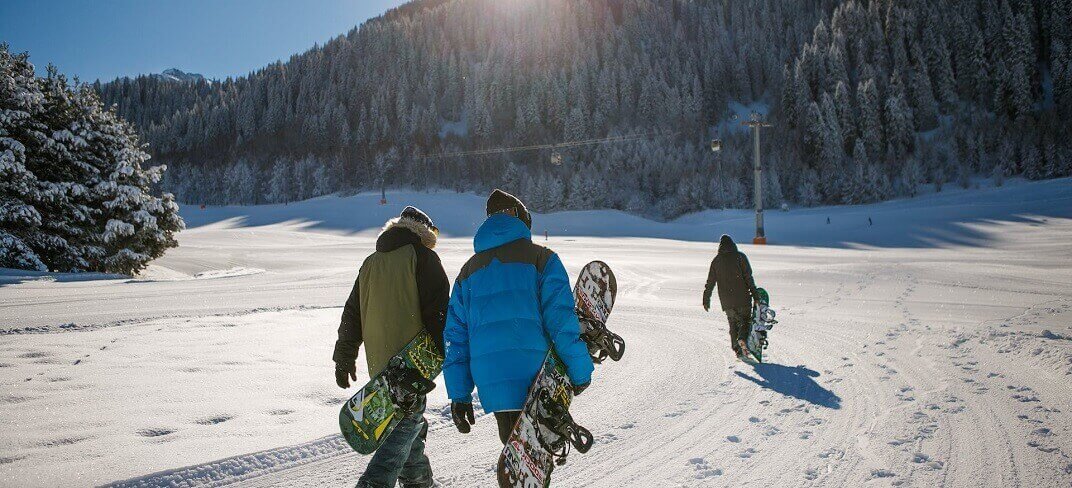How to Prevent Skiing and Snowboarding Injuries This Winter

Last Updated: 12 December 2024
To the delight of many, with the arrival of winter, the ski season reopens and it's back to the slopes. Winter sports, besides being fun and much loved, are a great way to keep fit. Often, however, people underestimate the risks involved, and the consequences are nasty injuries that not only ruin the vacation but also compromise health, sometimes seriously. It is therefore important to follow some basic rules to have fun without getting hurt. Let's see together how to prevent the most common skiing and snowboarding injuries.
Why Do Injuries Happen?
In skiing and snowboarding, just like in any sport, there's always a chance of injuries. Furthermore, these winter activities are influenced by weather conditions, temperatures, and altitude, which can have negative impacts. For instance, at higher altitudes, lower oxygen levels may lead to increased breathing rates and fluid loss, reducing athletic performance and elevating the risk of injuries. Some factors contributing to injuries include:
- Adverse weather conditions.
- Altitude-related issues.
- Dehydration.
- Falls.
- Improper behaviors (skiing on slopes beyond one's skill level, disregarding signs, etc.).
- Inadequate equipment.
What Are the Most Common Injuries?
Even experienced skiers and snowboarders, well-equipped and prepared, may experience injuries. Among the most common ones are:
- Knee ligament sprains, tears, and anterior cruciate ligament (ACL) strains. They represent a significant percentage of injuries, with about 30-40% of slope incidents involving knee injuries.
- Injuries to the neck, spine, wrist, hand, and head. Concussions account for about 10-15% of incidents, while wrist and hand injuries constitute approximately 15-25% of injuries reported by skiers and snowboarders.
- Shoulder dislocations or fractures. They account for about 5-10% of injuries.
How to Prevent Slope Injuries?
To ensure personal and others' safety, it's essential to take various preventive measures:
- Appropriate clothing. Dressing in layers, wearing wind-resistant clothing, hats, gloves or mittens, and 100% UV protection sunglasses help shield from cold and extreme weather conditions. Also, apply sunscreen with a high SPF to protect the skin from harmful sun rays.
- Knowledge of rules and conditions. Being familiar with slope rules is essential. Signage indicates path difficulties and provides critical information such as off-piste danger or adverse weather conditions. It's advisable to explore new paths starting from lower difficulty levels, regardless of personal skill level.
- Optimal physical condition. Maintaining good fitness levels is crucial. A balanced training regimen encompassing cardiovascular activities (fitness), strength exercises (weights), and flexibility (stretching) prepares the body for the physical challenges of skiing and snowboarding.
- Proficiency with lifts. Understanding the correct operation and use of ski lifts is fundamental. Accidents can occur when unaware of lift ascent and descent procedures, like not lowering safety bars or not paying attention to other skiers or snowboarders when exiting lifts.
- Use proper equipment. Gear must be suitable and in good condition. Well-fitted boots, correctly adjusted bindings, helmets, skis, or boards matching your size and skill level are vital to prevent injuries from inadequate equipment.
UPMC Salvator Mundi International Hospital has a multidisciplinary team of specialists who can follow you in the event of an injury, from diagnosis, through treatment and all the way to recovery, devising an integrated and fully personalized path. Learn more about our services: